ETH News
All stories that have been tagged with Microtechnology
Tiny component for record-breaking bandwidth
News

A modulator developed by researchers from ETH Zurich has broken the terahertz mark. The ultrafast component efficiently transmits large volumes of data into the fibre-optic network in a short space of time.
Precision therapy with microbubbles
News

ETH Zurich researchers have investigated how tiny gas bubbles can deliver drugs into cells in a targeted manner using ultrasound. For the first time, they have visualised how tiny liquid jets generated by microbubbles penetrate the cell membrane enabling the drug uptake.
Delivering medicines with microscopic flowers
News
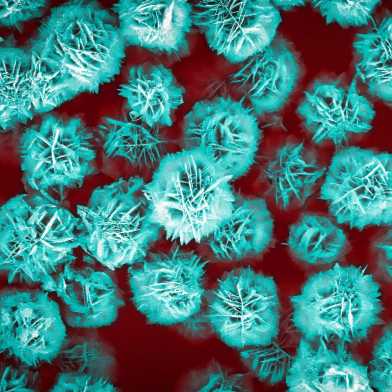
These small particles are reminiscent of paper flowers or desert roses. Physicians can use them to guide medicines to a precise destination within the body. Better yet, the particles can easily be tracked using ultrasound as they scatter sound waves.
Riding sound waves in the brain
News
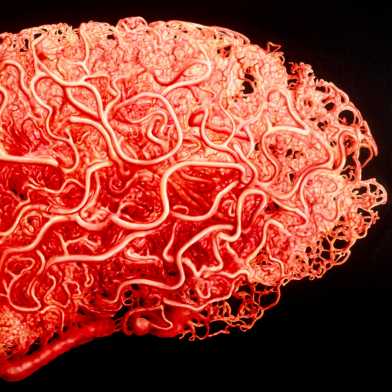
ETH Zurich researchers have shown for the first time that microvehicles can be steered through blood vessels in the brains of mice using ultrasound. They hope that this will eventually lead to treatments capable of delivering drugs with pinpoint precision.
A precision arm for miniature robots
News

Until now, microscopic robotic systems have had to make do without arms. Now researchers at ETH Zurich have developed an ultrasonically actuated glass needle that can be attached to a robotic arm. This lets them pump and mix minuscule amounts of liquid and trap particles.
Fighting tumours with magnetic bacteria
News
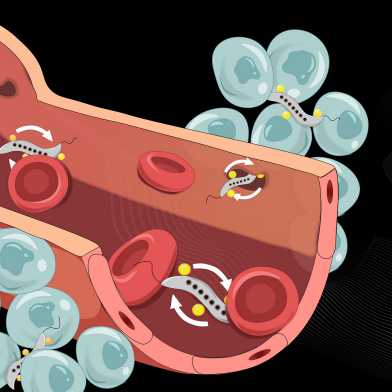
Researchers at ETH Zurich are planning to use magnetic bacteria to fight cancerous tumours. They have now found a way for these microorganisms to effectively cross blood vessel walls and subsequently colonise a tumour.
Speculative calculations open a backdoor to information theft
News
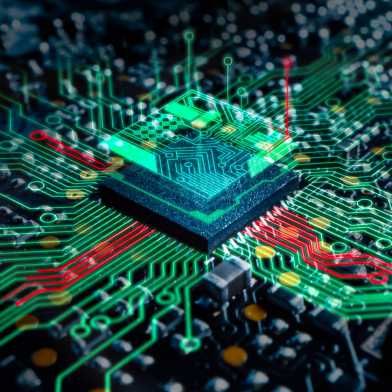
ETH Zurich researchers have discovered a serious security vulnerability in computer hardware. The vulnerability, called "Retbleed," affects microprocessors from market leaders Intel and AMD. All commercially available operating systems worldwide that use these processors are affected. When computers execute special calculation steps to compute faster, they leave traces that hackers could abuse.
New imaging method makes tiny robots visible in the body
News

Microrobots have the potential to revolutionize medicine. Researchers at the Max Planck ETH Centre for Learning Systems have now developed an imaging technique that for the first time recognises cell-sized microrobots individually and at high resolution in a living organism.
Helping robots feel more human
News
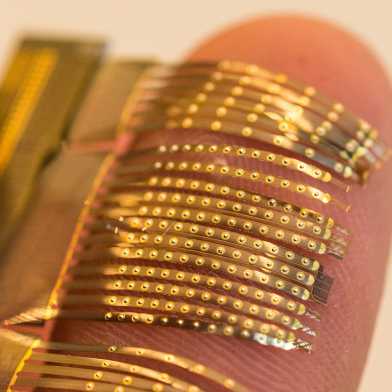
For his doctorate, Johannes Weichart is developing an artificial skin that could give robots a sense of touch similar to humans. This would make them much more adept at handling objects.
Applying the butterfly principle
News

ETH Zurich researchers have created artificial colours by 3D printing certain nanostructures inspired by those of a butterfly. This principle can be used in the future to produce colour screens.
Rapid PCR tests at the touch of a button
News
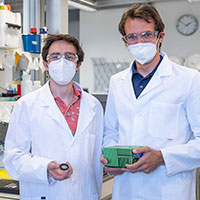
ETH researchers Michele Gregorini and Philippe Bechtold have developed a PCR testing device that can easily be used outside the lab – and that takes less than 30 minutes to deliver results. Now the two young entrepreneurs are focusing their efforts on getting the device approved for medical use.
Finding inspiration in starfish larva
News

Researchers at ETH Zurich have developed a tiny robot that mimics the movement of a starfish larva. It is driven by sound waves and equipped with tiny hairs that direct the fluid around it, just like its natural model. In the future, such microswimmers could deliver drugs to diseased cells with pinpoint accuracy.
“Jump in and go for it”
News

ETH Fellow Nadia Shardt is researching how water droplets in clouds freeze to form ice, and the role played by particles in this process. She has developed an innovative apparatus specifically for this purpose. She hopes that her findings will enable climate models to produce more accurate forecasts.
Swimming upstream on sound waves
News
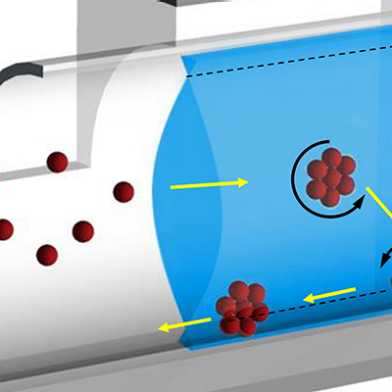
ETH researchers are among the first scientists to have succeeded in propelling microvehicles against a fluid flow using ultrasound. In future, these tiny vehicles are set to be introduced into the human bloodstream, thereby revolutionising the field of medicine.
Miniscule robots of metal and plastic
News
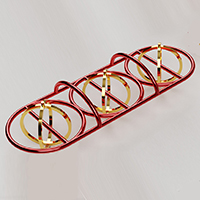
Researchers at ETH Zurich have developed a technique for manufacturing micrometre-long machines by interlocking multiple materials in a complex way. Such microrobots will one day revolutionise the field of medicine.
Medical microrobots score the Breakthrough of the Year
News
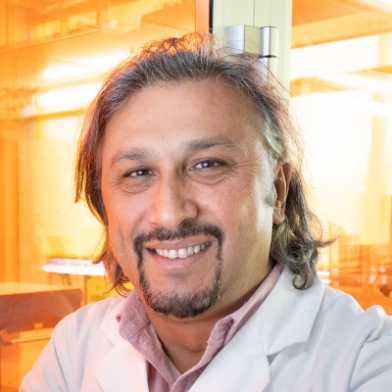
Research done by Professor Metin Sitti was voted the Breakthrough of the Year in the category “Engineering & Technology” at this year’s Falling Walls Conference in Berlin. The ETH Zurich-affiliated researcher’s microrobots open up new possibilities for non-invasive medical diagnosis and treatment.
Cells on the run
News
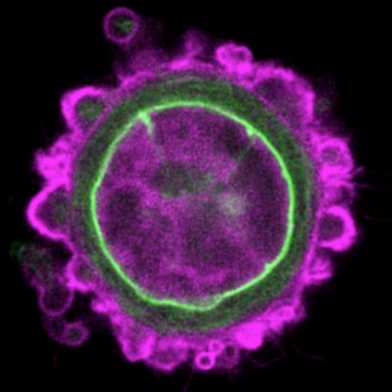
Many cells in the body must pass through tissue, which sometimes requires them to get out of tight corners. An international research team co-led by ETH Zurich has now examined how cells recognise and escape from such bottlenecks. Among the results of the team’s work are new pointers for how to improve immunotherapy.
A completely new plasmonic chip for ultrafast data transmission using light
News

ETH researchers have built an ultrafast chip that can speed up data transmission in fibre optic networks. The chip combines several innovations at the same time and, given the growing demand for streaming and online services, represents a significant development.
Wavy surfaces for better light control
News
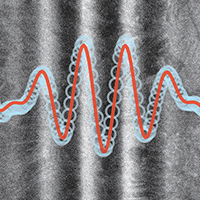
Researchers at ETH Zurich have developed a method for the production of wavy surfaces with nanometre precision. In the future this method could be used, for instance, to make optical components for data transmission on the internet even more efficient and compact.
Surprisingly strong and deformable silicon
News
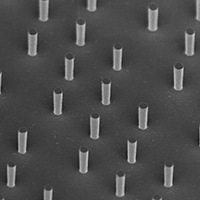
Researchers at ETH and Empa have shown that tiny objects can be made from silicon that are much more deformable and stronger than previously thought. In this way, sensors in smartphones could be made smaller and more robust.
Nano-sponge with extreme properties
News
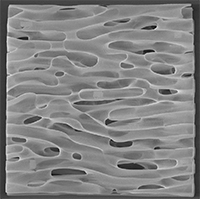
A new process simplifies the fabrication of porous materials with a defined nanostructure and takes them one step closer to mass production.
Time-resolved measurement in a memory device
News
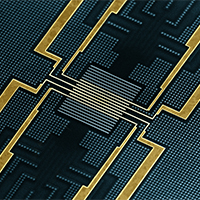
Researchers at ETH have measured the timing of single writing events in a novel magnetic memory device with a resolution of less than 100 picoseconds. Their results are relevant for the next generation of main memories based on magnetism.
From rocket builders to tree planters
News
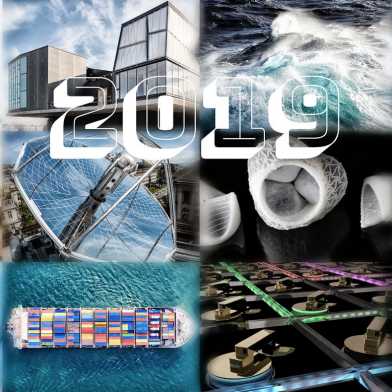
The year 2019 has certainly been a busy one at ETH. A new president took office and the second Sci-Tech Oscar was awarded, along with other major prizes, but there were also plenty of inventions and topics for discussion.
Honey, I shrunk Michelangelo's David
News
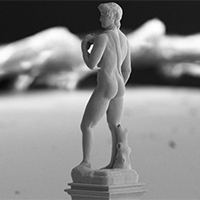
Researchers in Zurich have reproduced Michelangelo’s David as a miniature in metal. Their achievement highlights the potential of a special 3D printing method developed at ETH.
Flying by magnetism
News
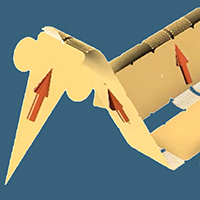
Researchers at the Paul Scherrer Institute PSI and ETH Zurich have developed a micromachine that can perform different actions. First nanomagnets in the components of the microrobots are magnetically programmed and then the various movements are controlled by magnetic fields. Such machines, which are only a few tens of micrometres across, could be used, for example, in the human body to perform small operations.
Measuring ethanol’s deadly twin
News

ETH researchers have developed an inexpensive, handheld measuring device that can distinguish between methanol and potable alcohol. It offers a simple, quick method of detecting adulterated or contaminated alcoholic beverages and is able to diagnose methanol poisoning in exhaled breath.
The world’s smallest stent
News
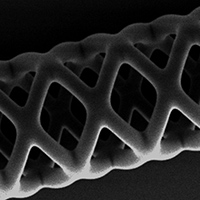
Researchers at ETH Zurich have developed a new method for producing malleable microstructures – for instance, vascular stents that are 40 times smaller than previously possible. In the future, such stents could be used to help to widen life-threatening constrictions of the urinary tract in foetuses in the womb.
Efficient removal of problem substances
News
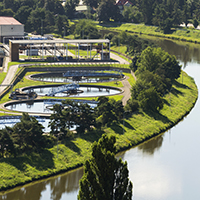
Microcontaminants place a considerable burden on our water courses, but removing them from wastewater requires considerable technical resources. Now, ETH researchers have developed an approach that allows the efficient removal of these problematic substances.
The stiffest porous lightweight materials ever
News
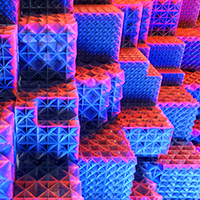
Researchers at ETH have developed and manufactured a family of architectures that maximises the stiffness of porous lightweight materials. It’s practically impossible to develop stiffer designs.
Millimetre waves for the last mile
News

Reseachers at ETH Zurich have developed a modulator with which data transmitted via millimetre waves can be directly converted into light pulses for optical fibres. This could make covering the “last mile” up to the internet socket at home considerably faster and cheaper.
Designer emulsions
News
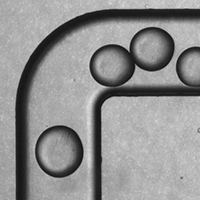
ETH material researchers are developing a method with which they can coat the droplets with controlled interfacial composition and coverage on demand in an emulsion in order to stabilise them. In doing so they are fulfilling a long-held dream of researchers and industry.
Valves for tiny particles
News
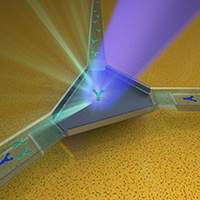
Newly-developed nanovalves allow the flow of individual nanoparticles in liquids to be controlled in tiny channels. This is of interest for lab-on-a-chip applications such as in materials science and biomedicine.
An electronic rescue dog
News

ETH Zurich scientists have developed the smallest and cheapest ever equipment for detecting people by smell. It could be used in the search for people buried by an earthquake or avalanche.
A receiver for touch communication
News
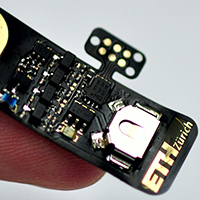
Battery lifetime is an important issue in wearable devices. Ideally, they should always be ready to receive control signals without consuming a lot of power. Researchers at ETH Zurich have now developed a zero-power receiver for touch communication that harvests its energy directly from the signal.
Neutrophil-inspired propulsion
News
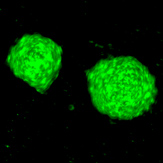
Inspired by white blood cells rolling on endovascular walls before transmigrating to the disease site, scientists at ETH Zurich have succeeded in getting particles to move along the walls of microscopic, three-dimensional vessels. This method could be used in targeted cancer therapeutics.
Optoelectronics without glass
News
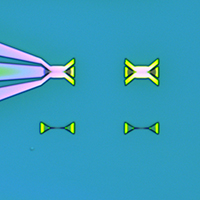
Researchers at ETH Zurich have developed the first opto-electronic circuit component that works without glass and is instead made of metal. The component, referred to as a modulator, converts electrical data signals into optical signals. It is smaller and faster than current modulators, and much easier and cheaper to make.
Biodegradable microsensors for food monitoring
News
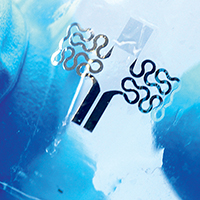
A new generation of microsensors could provide the vital link between food products and the Internet of Things. ETH researchers have developed an ultra-thin temperature sensor that is both biocompatible and biodegradable.
An expert in tiny medical helpers
News

Simone Schürle likes to get to the bottom of things. Since August, the micro- and nanotechnology expert and fellow of the «Society in Science» , has been working as Assistant Professor of Responsive Biomedical Systems at ETH Zurich to develop tiny machines for medical applications in the human body.
Not air con, but a cooling curtain
News
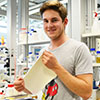
Climate change is leading to ever higher temperatures and aridity in many areas, making efficient room cooling increasingly important. An ETH doctoral student at the Functional Materials Laboratory has developed an alternative to electrically powered air conditioning: a cooling curtain made of a porous triple-layer membrane.
Universal stabilisation
News
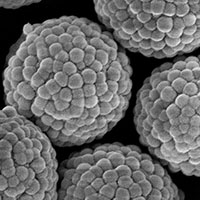
ETH researchers led by Lucio Isa have developed microparticles with a rough, raspberry-like surface that stabilise emulsions following a new principle.
Liquid fuel for future computers
News
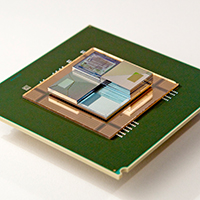
In the future, a new type of tiny redox flow battery will supply tightly packed electronic components with energy, while also dissipating the heat they produce.
Cellular test of strength
News
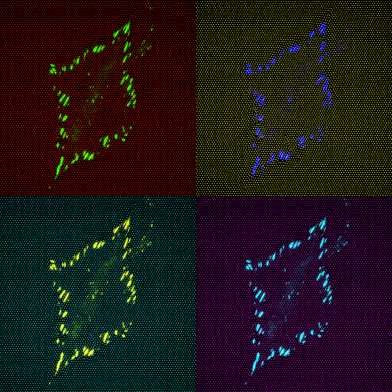
Biological cells can expand, contract and interact with neighbouring cells. With an advancement in a microscopy technique, ETH Zurich researchers can now readily, directly, and accurately determine which forces are at work during cell motion and where. The technique is used in areas such as cancer research.
Artificial molecules
News
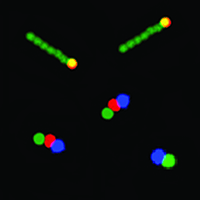
A new method allows scientists at ETH Zurich and IBM to fabricate artificial molecules out of different types of microspheres. The researchers would like to one day use such tiny objects in micro-robots, for photonics and basic biochemical research.
Microagents with revolutionary potential
News
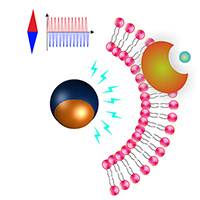
Micro and nanorobots that attack tumours with maximum precision using drugs: this is what the fight against cancer may look like in the future. A group of ETH researchers led by Salvador Pané are laying the foundations with magnetoelectric-controlled Janus machines.
Protective covers for implants
News
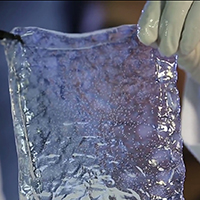
ETH scientists have developed a membrane that protects medical implants from unwanted encapsulation by connective tissue. The researchers founded a spin-off company just over a year ago and have now been awarded funding by the start-up competition Venture Kick.
Switching light with a silver atom
News
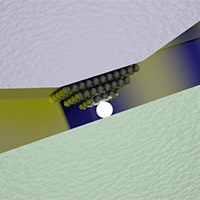
Researchers working under Juerg Leuthold, Professor of Photonics and Communications, have created the world’s smallest integrated optical switch. Applying a small voltage causes an atom to relocate, turning the switch on or off.
Copper deposition to fabricate tiny 3D objects
News
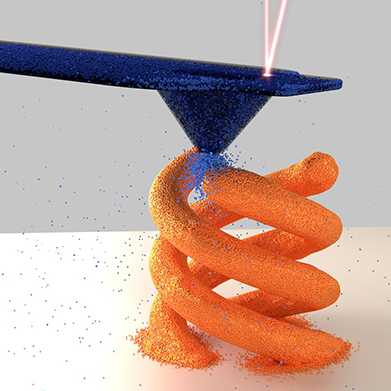
A new 3D microprinting process allows scientists to manufacture tiny, complex metal components easily. The technology used was designed by ETH researchers years ago for biological research and has now been further developed for a completely different application.
Trampolining water droplets
Press release
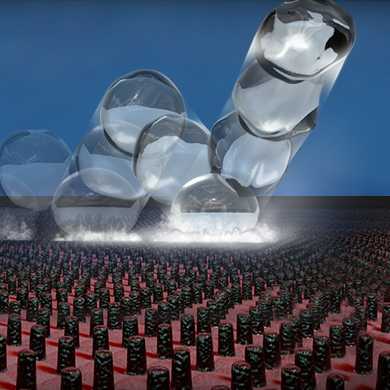
Materials that actively repel water and ice very strongly are sought after by the aviation industry and for many other technical applications. ETH researchers have now found out how to specifically design the rigid surfaces of such materials: by teaching water droplets how to trampoline.
Buckle up for fast ionic conduction
News
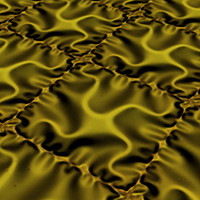
ETH material engineers found that the performance of ion-conducting ceramic membranes that are so important in industry depends largely on their strain and buckling profiles. For the first time, scientists can now selectively manipulate the buckling profile, and thus the physical properties, allowing new technical applications of these membranes.
New composite material as CO2 sensor
News
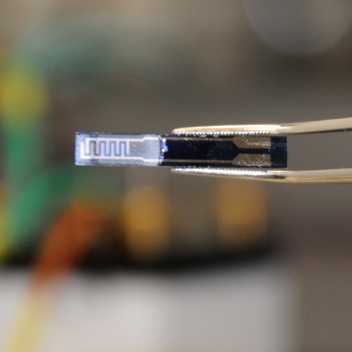
A new material changes its conductivity depending on the concentration of CO2 in the environment. The researchers who developed it have utilized the material to produce a miniature, simply constructed sensor.
Better micro-actuators to transport materials in liquids
News
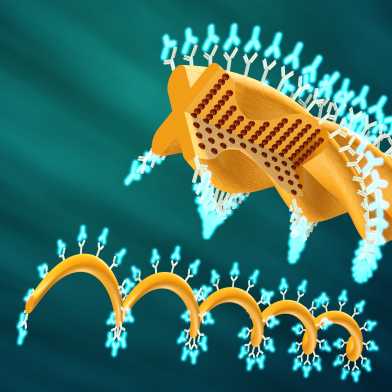
Researchers have developed improved forms of tiny magnetic actuators thanks to new materials and a microscopic 3D printing technology.
Robots with a soft shell
News
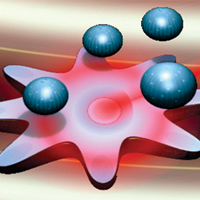
They are half a millimetre in size, have a star-shaped hydrogel shell and open when they are irradiated with laser light in the near-infrared range. The new micro-robots, developed in the laboratory of Professor Brad Nelson at ETH, will potentially aid the precision delivery of drugs.